Article's Content
There have been talks of a looming recession, and these numbers tell the story:
- US stocks fell over 22% in the first half of the year
- The S&P 500 sunk into a bear market for the first time in two years
- Meta, Twitter, and others paused their hiring and recruitment plans
- At least 61,000 employees have lost their jobs at the time of this writing
Marketing hasn’t escaped the ax either.
With almost half of U.S businesses worried about a recession, many brands are slashing marketing budgets.
What’s worse is that many B2B marketers still struggle to prove the ROI of content marketing to stakeholders. And let’s be honest: ROI is often hard to prove.
Making a solid case that sells stakeholders on the value of content marketing can be tough, but it’s not impossible. Whether or not a recession is approaching, it’s up to you to show and prove that investing in content works.
That’s where this guide comes in super handy.
This practical guide breaks down everything you need to know about the ROI of content marketing. We include tips and examples from successful brands to ensure you know how to prove ROI.
Whether you’re an in-house marketer at a SaaS company or part of a marketing agency, this guide will help you sell stakeholders on the value of content marketing. You’ll be glad you found and read this guide.
Let’s dive in.
“I read every issue of the Foundation newsletter. The breakdowns are outstanding.”
– Brian Dean, Founder of Backlinko (acquired by SEMRush)
What is the ROI of Content Marketing?
Investing in content is like investing in the stock market, and you get returns when you play the long game. For example, if you bought $1,000 worth of Tesla stocks in 2010, you’d have $920,460 at the time of this writing, and that’s a whopping 90,000% gain in 12 years.
The same applies to investing in content marketing.
Investing in content is like investing in the stock market, and you get returns when you play the long game. Share on XInvesting in content marketing yields massive returns, including qualified leads, subscribers, one-time customers, repeat customers, and more. A single piece of content can be worth hundreds of thousands of dollars.
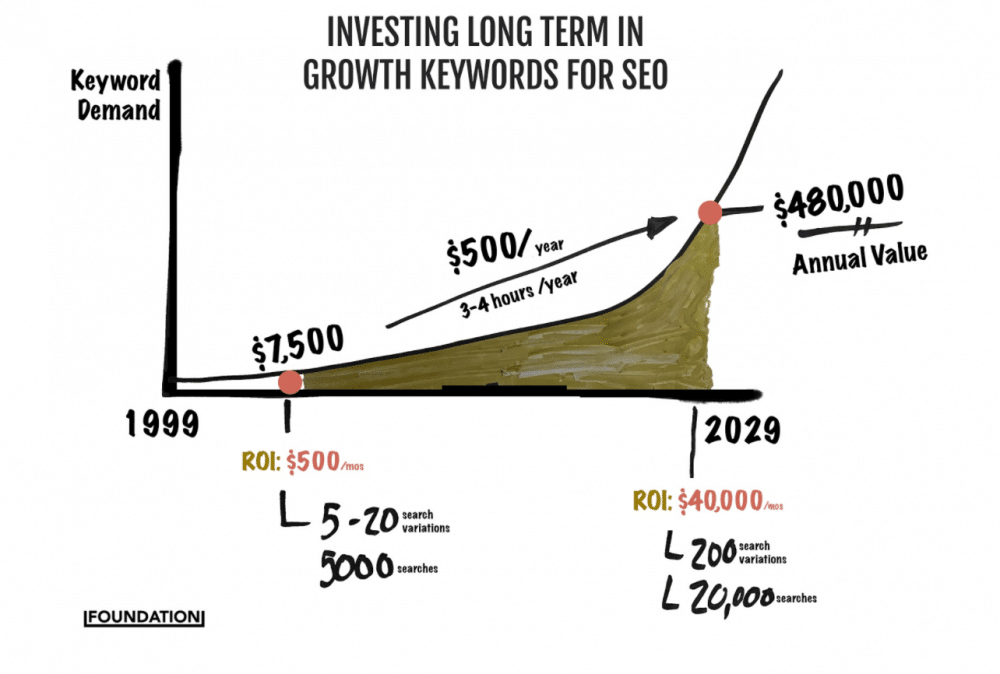
Investing in content marketing also involves nailing content-market fit. That means identifying the kind of content that works best for different distribution channels.
Hootsuite is a good example of a SaaS brand that treats content as an investment, and the company leverages different channels to invest in content. Let’s review one of its top-performing blog posts, the Instagram hashtags guide.
Hootsuite first published the asset in 2016:

The asset generated less than 3K monthly visits.
Even 4 years after the team hit publish, Hootsuite didn’t abandon the blog post or write it off prematurely. Until 2021 the piece still generated less than 10K visits, and the blog post now generates almost 200K monthly visits.
Hootsuite boosted the content’s performance by performing a content refresh and repurposing the content into different formats. This is what the blog post looks like right now:

The post now generates over 55,000 in monthly organic traffic revenue for high-intent long tail keywords like:
- Best hashtags for Instagram (6,900 monthly searches)
- Top hashtags on Instagram (2500 monthly searches)
- Instagram Hashtags (10,000 monthly searches)
- And other keyword variations
Any brand looking to outrank Hootsuite must spend roughly $50,000 on Google Ad words to rank for a similar keyword combination.
Hootsuite also repurposed the article into a 6-minute YouTube video that has generated more than 21,000 views in less than one year. They also embedded this video in the updated blog post to improve its positioning on the search results page.
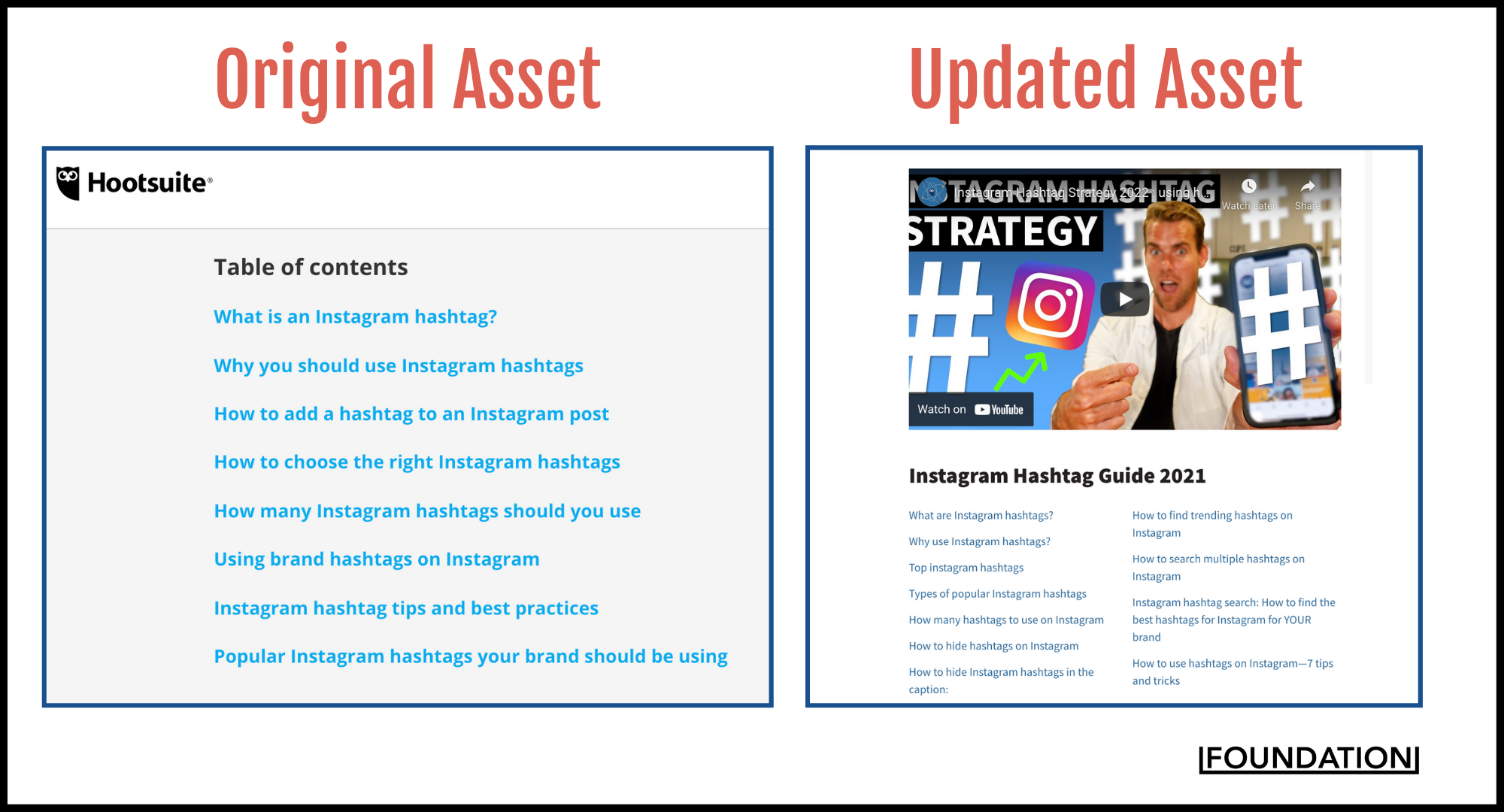
Hootsuite has built a content moat on social media that has almost 10 million followers and subscribers on different platforms:
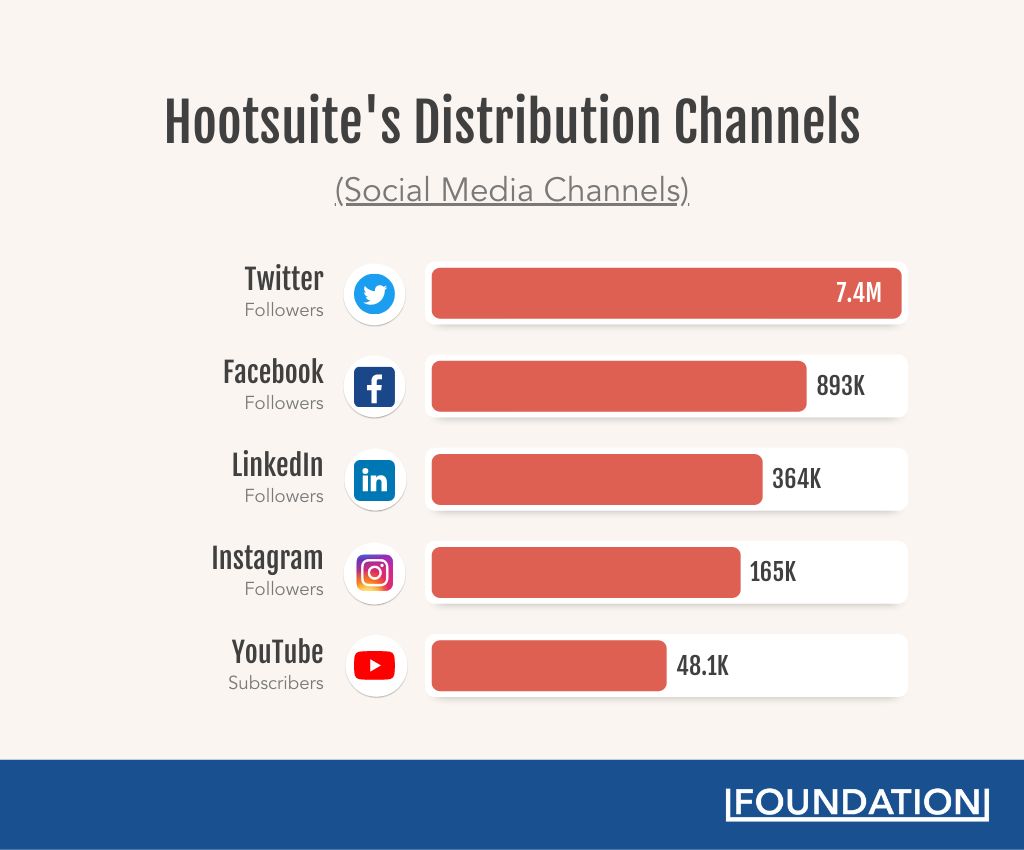
Then the company repurposed the blog post into a carousel on Instagram that has generated more than 1K reactions:

Notice how each piece of content is short, digestible, and perfectly suited to the channel it was published on. You can see from our analysis that Hootsuite treats content as an investment in these ways:
- Creating content around niche keywords with high growth potential
- Repurposing to fit different distribution channels
- Refreshing evergreen content
It’s no wonder 5.1 million organic visitors land on Hootsuite every month.
Salesforce, NerdWallet, and Glassdoor are also brands that understand the power of investing in content marketing.
Of course, we understand that the economic downturn has left many leaders wondering if their content marketing investment can be paused until things start to look up. But remember that a downturn doesn’t mean prospects have stopped searching for solutions. So if your company takes a break from marketing during a time like this, you certainly will lose tons of revenue-generating and relationship-building opportunities by the time the market recovers.
An economic downturn doesn’t mean prospects have stopped searching for solutions. So if your company takes a break from marketing now, you certainly will lose revenue opportunities by the time the market recovers. Share on XYou should show stakeholders that content marketing isn’t a luxurious expense but a necessity. Convincing stakeholders can be challenging, especially if you have no way to prove the ROI, and it’s even harder to convince one with zero marketing knowledge or experience. Here are some data-driven tips to get started.
“If you do not subscribe to Foundation’s newsletter, you are missing out on a content marketing GOLDMINE. Definite must-read.”
– Rachael Hensley, Director of PR and Comms at Shippo
How to Sell Stakeholders on the ROI of Content Marketing
1. Document Your Marketing Strategy
Documenting your marketing strategy makes articulating business goals, objectives, and KPIs easier. It also boosts the success potential of your marketing efforts.
We’ve got some stats to prove it:
- 78% of marketers who hit business goals through content marketing in 2021 had a documented strategy (Semrush)
- 60% of the most successful B2B marketers have a documented content marketing strategy (Content Marketing Institute)
A well-rounded, documented strategy is a blueprint that lets you measure marketing efforts and focus on metrics that count. Your strategy should align with the overall higher-level marketing strategy and directly support company or departmental goals/KPIs. This is key for in-house content marketers.
There are a number of ways to craft your marketing strategy.
One way is to create a strategy that covers each stage of the SaaS sales funnel.
Each stage of the funnel plays a unique role in the marketing process, especially because prospects’ needs change as they move further down the funnel. That’s why creating content for each sales funnel stage makes it easier for marketers to track ROI. It also helps you guide prospects better and boosts your chances of conversion.
So, how do you create a strategy encompassing the different SaaS sales funnel stages?
Start with customer research.
Learn about your prospect’s goals, aspirations, and pain points. Talk to customers. If you have none, talk to your competitor’s customers. By researching first, you ensure your efforts will create value for your target audience.
If you are still in the persona-building phase, here is a 4-step framework to help you develop the right profile:
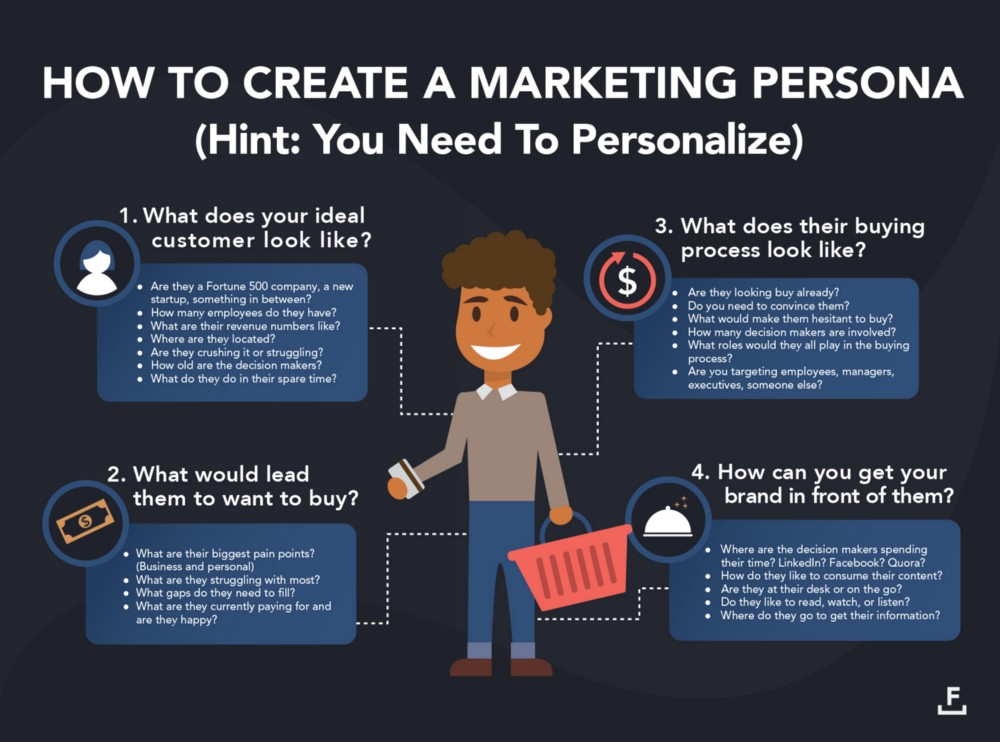
After research, you should conduct qualitative and quantitative data analyses to uncover useful insights. That means asking your customers about their biggest pain point directly. Or use the Sherlock Homeboy Technique to see what’s working best for your competition.
Next, develop your customer journey map. That means understanding how your target audience interacts with your product, including the various touch points involved as they move through the sales funnel.
Here’s how to get started with creating your customer journey map:
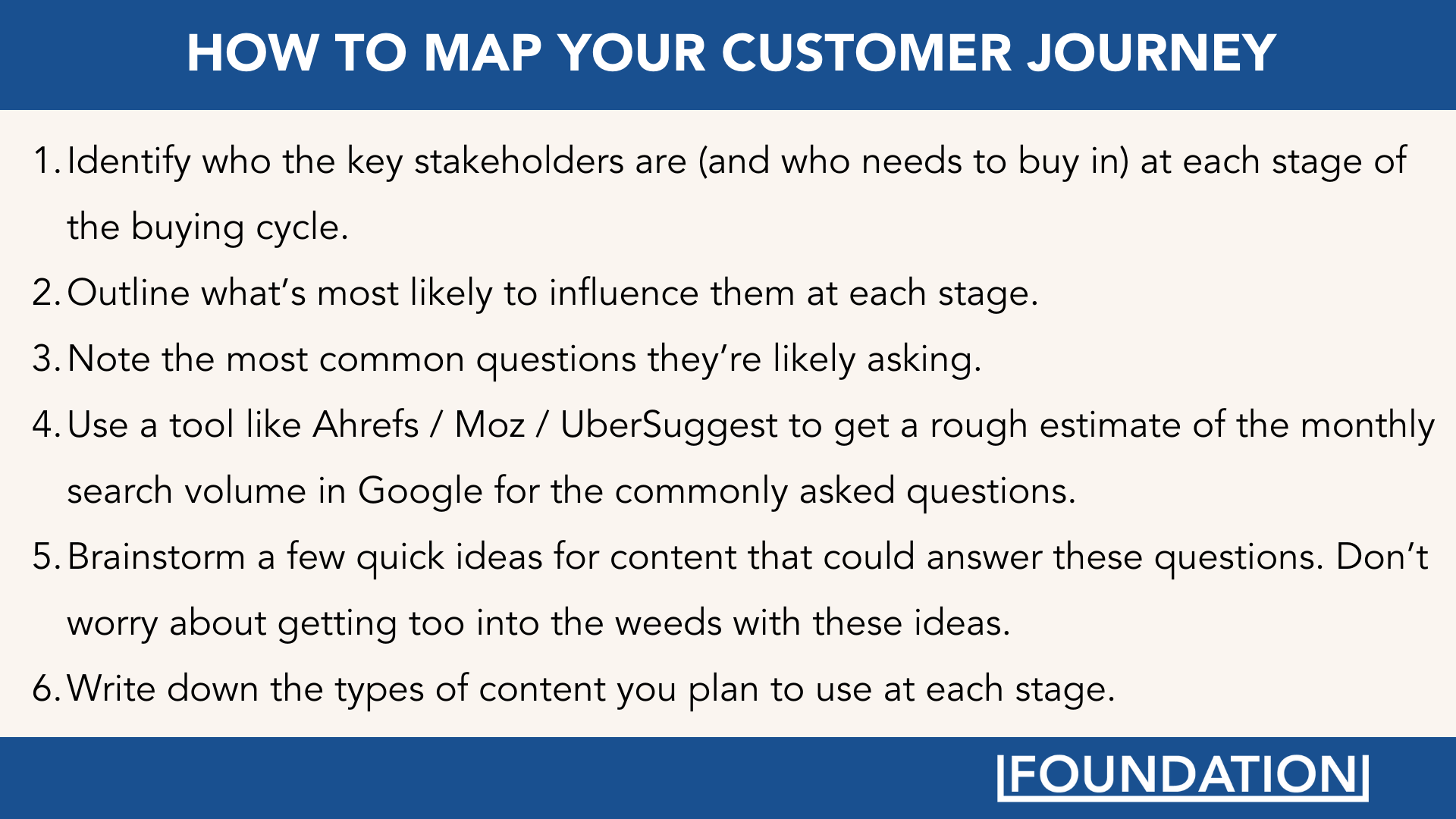
At this stage, you want to map out the content assets, target audience intent, and goals for each stage of the funnel. This is what it will look like:
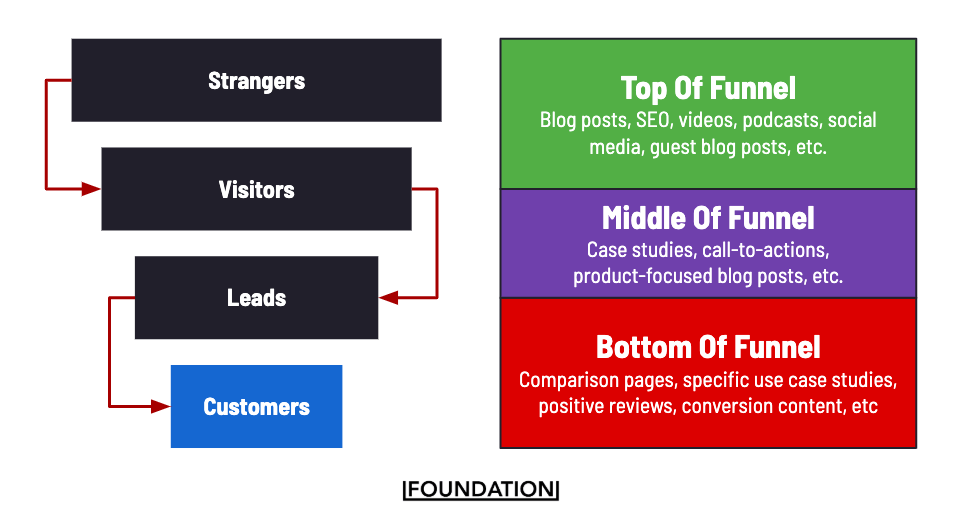
Without this level of detail in your strategy, it will be tough to measure your successes, predict the value of content investing, and prove ROI.
2. Show Stakeholders What They Stand To Gain From The Investment
Showing numbers and examples from brands applying similar techniques is one thing. But you also want to ensure you tie your examples back to the results stakeholders care about. That means focusing on metrics that align with business goals.
While preparing your presentation or report, think beyond your departmental goals. Social proof isn’t a metric that will sway stakeholders in your direction. You want to choose the right metrics by identifying:
- Your business model and goals
- Internal stakeholders’ goals
- The metrics they use to measure these goals
These elements determine how stakeholders define success. Depending on the growth stage of your company, success could mean more subscribers, organic traffic, conversions, or repeat customers who become brand evangelists.
Measuring can get a little tricky despite knowing the business and stakeholder goals. Metrics like organic traffic, bounce rate, time on site, and pages per session don’t mean much to stakeholders because these metrics don’t impact revenue.
Here are three KPIs you can use to show stakeholders the correlation between marketing efforts and conversions:
- Qualified Leads
- Conversions
- Customer Lifetime Value (CLV)
Each of these metrics impacts the business’s bottom line in terms of revenue and overall growth. That’s why stakeholders care more about these numbers than organic traffic and other metrics that hardly move the needle.
Show stakeholders what they stand to gain from investing in content marketing using these metrics: qualified leads, conversions, and customer lifetime value. These metrics directly impact revenue and overall business growth. Share on XAlso, it’s important that you’re upfront about the risk of investing. That means identifying possible roadblocks you might encounter as you go. Some of these risks include insufficient resources, slow-paced growth, and competitors with deeper pockets.
Stakeholders need to see that you have done your research well and understand the risks involved. Here are some things to consider when analyzing the risks:
- Stakeholder’s fears about investing in content
- Possible limitations and roadblocks that can slow you down
- Resources needed to mitigate risks (money, internal or external SMEs, etc.)
The goal isn’t to scare off stakeholders but to develop a strong argument, especially when they disagree with your points. Rebuttals often happen, and you can stay ahead of the game by researching and drafting a strong, data-backed argument to get the buy-in you need.
Also, keep in mind that revenue generation is the ultimate goal for your business, and that’s why the distribution channels don’t matter as much as the results you gain. So ensure you cover all your bases before pitching to stakeholders. That’s how you earn trust and get buy-in.
3. Lead With Quantitative and Qualitative Evidence
To sell stakeholders on the ROI of content marketing, you need to show solid proof. That means moving from showing potential value to using concrete, irrefutable results from marketing campaigns.
Before jumping into finding examples, ensure you have done the following:
- Identify what success looks like for your business. Your content strategy should directly support the larger marketing strategies. So set goals that align with and directly impact the big picture.
- Figure out the actions and results that lead to hitting those business goals
- Connect those results to metrics that show you are making progress because that’s what stakeholders care about.
After these are in place, ensure you track and attribute content marketing efforts. That means showing stakeholders how blog articles, videos, social posts, email, and other assets drive organic traffic, qualified leads, the number of freemium and paying users, and other metrics that ultimately impact revenue growth.
You can also use content-specific stats to make a case for diversifying content on your website. Like these:
- A study of 2,300 HubSpot customers revealed that businesses that blog see their monthly leads rise by 126% more than those who don’t. (HubSpot blog)
- 87% of video marketers say that video has increased traffic to their website. (Wyzowl)
- More than half (53%) of marketers say webinar is the top-of-the-funnel format that generates the most high-quality leads. (Demand Gen Report)
You can get stakeholders excited by showing what the future looks like. That means giving examples of real companies in your niche who are succeeding with content marketing. Include the types of content they create and the results from each campaign.
You can get stakeholders excited about investing in content marketing by showing what the future looks like. We have a portfolio of case studies that show how leading SaaS brands do marketing. You can use them to make your case. Share on X
We have a portfolio of case studies that show how leading SaaS brands do marketing. You can cite them as examples to make your case. Here are some to get you started:
- How Miro Turned the Whiteboard into a $17.5 Billion Valuation
- Loom’s Product-led GTM Playbook: How It Became Worth $1 Billion
- How NerdWallet Uses SEO Topic Clusters to Drive Traffic Worth $84M
- Canva’s Backlink Empire: How SEO, Outreach & Content Led To A $6B Valuation
4. Estimate ROI for Your Content Marketing Efforts
Showing what the investment will look like will give stakeholders something to look forward to. It can be the difference between getting feedback like “We don’t have the budget for this” and “We are willing to give this a shot.”
You can calculate your content marketing ROI using a tool like HubSpot ROI Calculator:
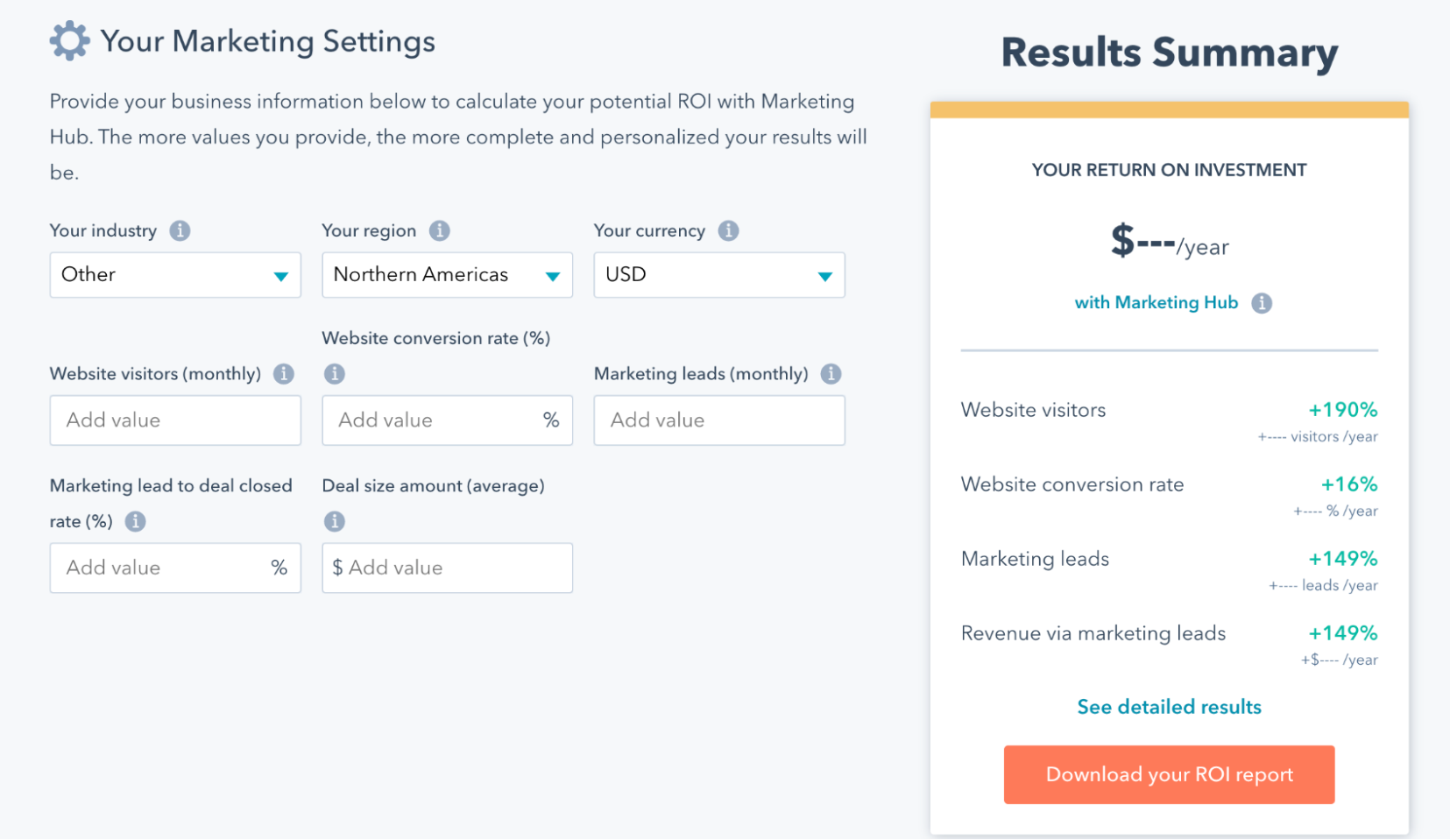
To double check, you can also use the good ol’ formula to calculate manually:
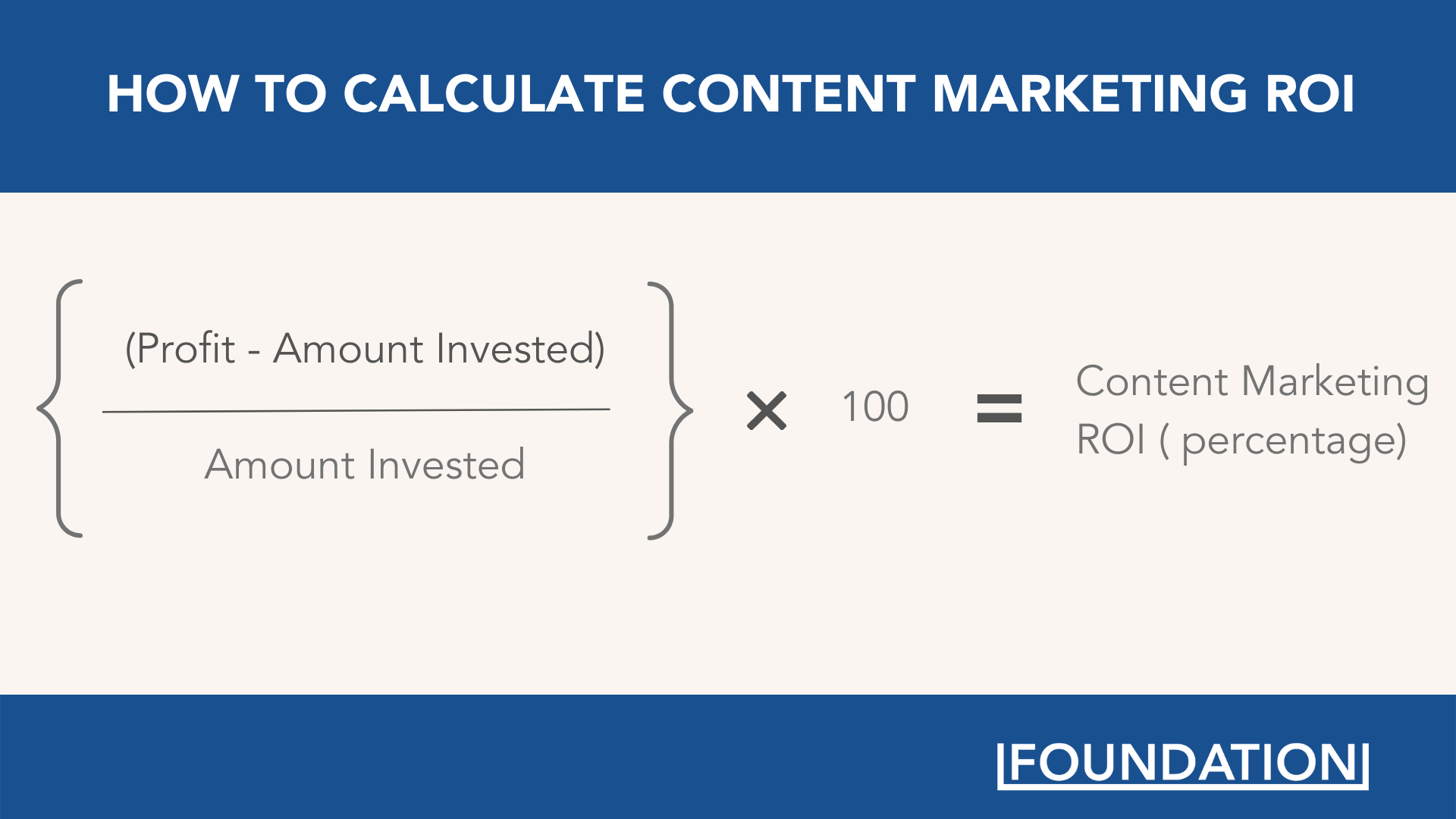
If you invest $1000 in creating a single piece of content that generates leads worth $3000, here’s what your ROI looks like:
[($3000 – $1000) / $1000] x 100 = 200%
The rule of thumb here is to measure how much you spend vs. how much you earn in revenue. You’re right on track if you earn two times or more than your initial investment, and it’s a profitable deal. Should stakeholders approve your budget, you want to paint a clear picture of the future. These numbers can get stakeholders sold on the value of content marketing.
Treat Content as an Investment
We’ll end with a favorite quote from Ross Simmonds:
A piece of content you produce today can generate more returns in two years than it would 24 hours after you hit publish. The secret is to HOLD onto a content investment for the long run. Optimize and distribute that content repeatedly and put paid media behind it.
A piece of content you produce today can generate more returns in two years than it would 24 hours after you hit publish. The secret is to HOLD onto a content investment for the long run. - @TheCoolestCool Share on XOf course, putting paid media behind a piece of content is optional. Since you want to give stakeholders less expensive and equally effective strategies, you can consider giving old content pieces a facelift as Hootsuite did. You can also repurpose existing content and distribute them on other channels.
Investing in organic social, community, and other non-SEO channels is another way to ensure you stay within budget and get great results.
It’s important you identify opportunities competitors might be overlooking and leverage them to drive business growth. That’s how you show stakeholders you have the business’s best interests at heart, and marketing can get the business where it needs to be faster.
“A newsletter that I read every single time when it hits my inbox! It’s full of deep analysis for B2B marketers, with hands-on case studies of how the most successful SaaS companies and marketplaces conquered their SEO niche.”
– Lars Kamp, CEO, Some Engineering Inc.
Quick, do it now before the next drop!







